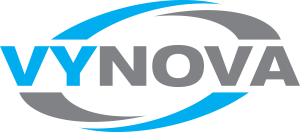
Using the AI-powered Datamaran platform, the team researched regulatory filings, industry benchmarks, news, and reviewed stakeholder feedback to pinpoint critical sustainability issues relevant to the chemicals sector. A detailed value chain mapping exercise was also conducted to understand how and where these issues manifest across the entire business ecosystem—from direct operations to suppliers and the ultimate impact of product consumption. This resulted in a comprehensive list of potentially material topics, which were ranked based on their impact significance and financial implications. Senior leadership and stakeholders from across ICIG entities, including Vynova, reviewed and validated these topics to ensure alignment with broader priorities.
Leveraging Datamaran’s platform, we are monitoring our material topics by keeping a pulse on the evolution of our external landscape. This dynamic and data-driven approach, which aligns with the ESRS, allows us to ensure we continue to focus our efforts where they are most relevant and impactful.
Vynova

In 2024, Zain continued to utilize Datamaran, a software analytics platform that conducts its materiality assessment by monitoring current and emerging ESG-related risks. The automated analysis includes benchmarking against peers, evaluating broader ESG regulations, online news, and media sources, alongside gathering insights from stakeholder engagement surveys.
Zain utilizes Datamaran's platform analytics and incorporates its telecom industry material topics list to ensure that emerging risks are considered in the company's materiality assessment. The revisions undergo approval from Zain's Chief Sustainability Officer.
Zain

We used Datamaran’s data analytics platform to assess the evolving universe of sustainability-related issues. The platform enabled us to analyze over 7,900 news articles, nearly 2,500 policy initiatives and regulatory developments, and activities of 178 industry peers in 10 countries around the world. Through this review, we generated a shortlist of 23 sustainability-related topics most relevant to Sun Life.
Sun Life
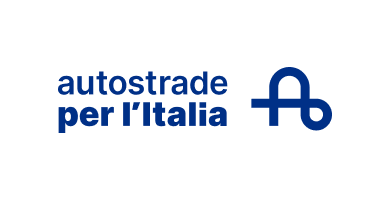
An analysis of the Group's operating environment was carried out using the Datamaran software platform . In order to provide a comprehensive, in-depth view of all corporate activities and trends through the lens of the value chain, the software platform performed a detailed and separate assessment of the Group's direct operations and the indirect operations arising from its commercial relationships. Moreover, the assessment performed, and the results obtained were differentiated in terms of the twofold dimension of materiality: impact materiality and financial materiality.
Autostrada per l'italia

Since 2019, we have been working with Datamaran and its Materiality Analysis tool, a business intelligence tool that uses data and artificial intelligence to conduct real-time materiality assessments. This tool enabled PSEG to identify and prioritize the ESG impacts, risks, and opportunities important to internal and external stakeholders by analyzing sources that included corporate reports, global regulations and initiatives, social media, and online news.
PSEG
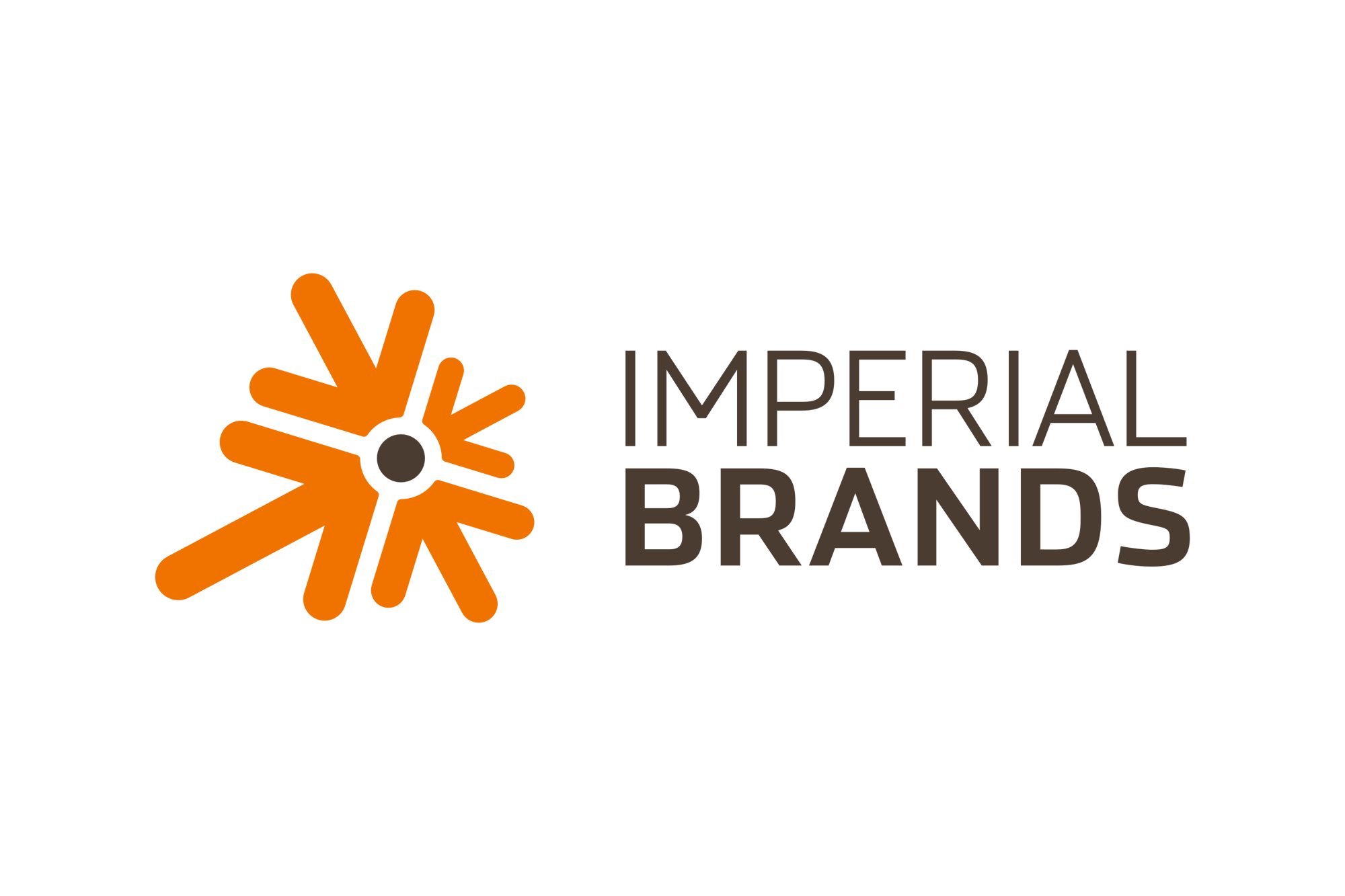
We used an Artificial Intelligence tool through an external provider, Datamaran, to process thousands of data points from corporate reports, mandatory and voluntary regulations, and online news.
This allowed us to define which issues were most material to our business. In addition to desk research and interviews, using an objective and consistent methodology on large amounts of information makes the data-driven insights fully traceable and better suited for auditing purposes, including reasonable assurance.
Imperial Brands
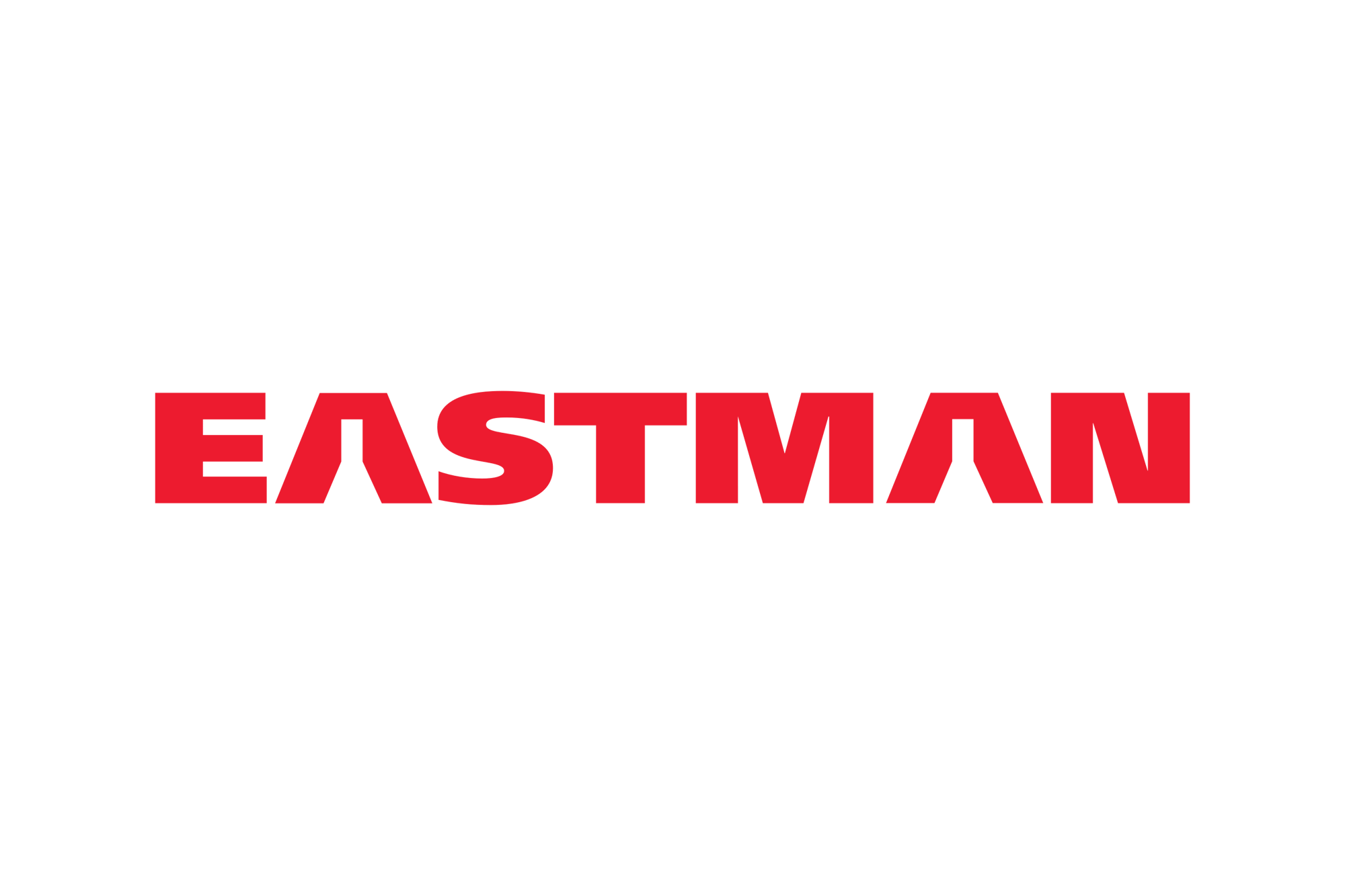
Eastman
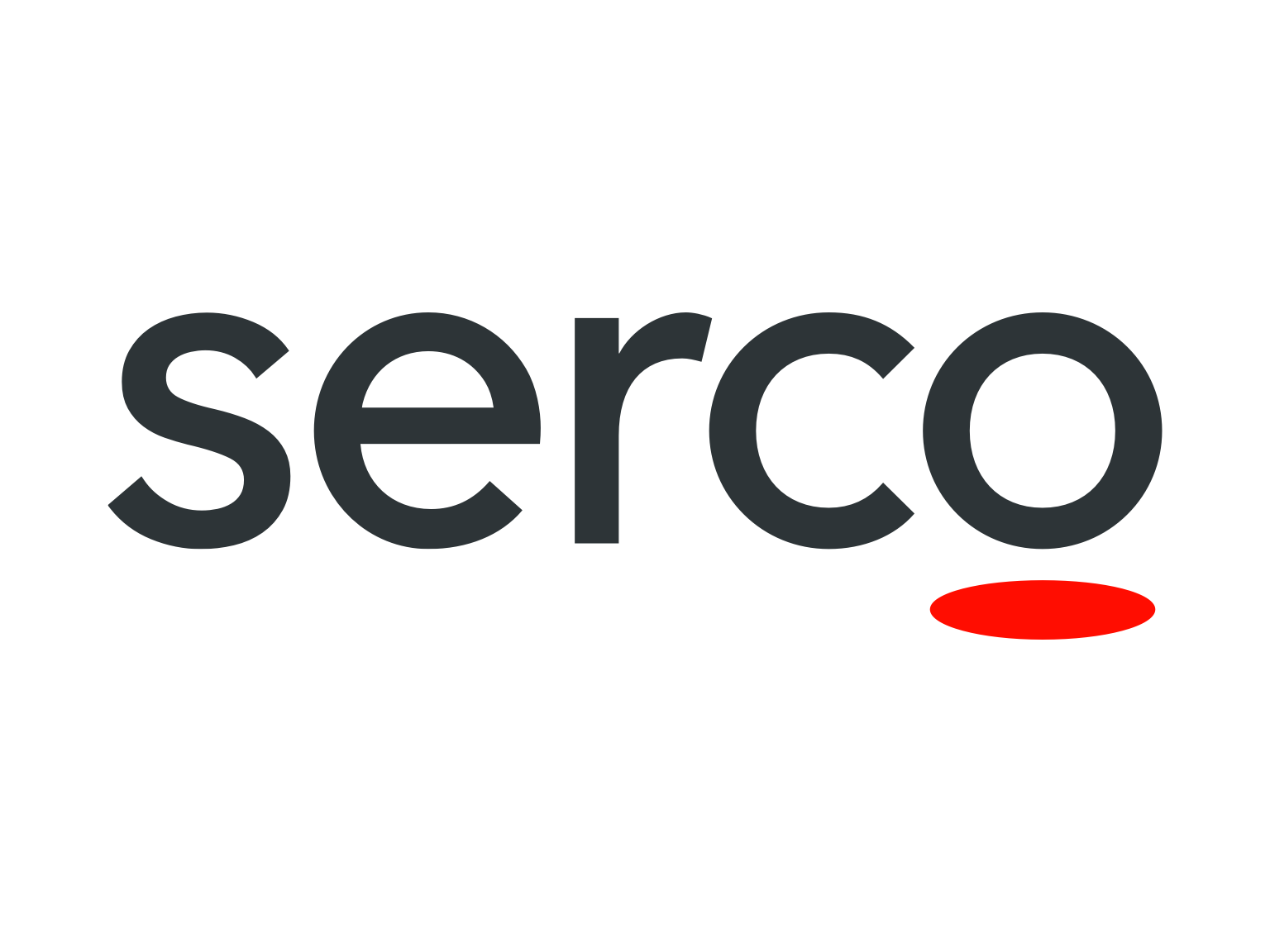
In 2022, we completed a high-level Double Materiality Assessment (DMA), which concluded that 14 issues were of most material importance (in relation to Serco) to our various stakeholders, including customers, shareholders and colleagues. For this exercise, we relied on Datamaran, an AI-powered, data-driven platform that enables companies to identify their ESG risks, opportunities and impacts, using analysis from multiple sources. Those issues have been mapped to our ESG framework, and in 2025 we will be partnering with Datamaran to undertake a further, more comprehensive DMA in line with CSRD requirements.
"We are pleased to be partnering with Serco to enable their CSRD compliance through smart ESG governance. Serco has demonstrated a strong commitment to bolstering their approach to ESG and using the Double Materiality Assessment process to build a solid foundation for managing and monitoring their material sustainability issues going forward. "
Marjella Lecourt-Alma CEO and co-founder of Datamaran
Serco

External analysis was based on various dimensions: Datamaran, which monitors over 100 ESG topics by analysing financial and sustainability reports of peers, mandatory and voluntary regulations for the financial sector, and social media news on ESG issues; a benchmark analysis has been conducted by reviewing annual and sustainability reports of peer banks; frameworks and reports (the Principles for Responsible Banking, the World Economic Forum's Global Risks Report 2024, the S&P Yearbook 2023, the UNEP FI Impact Radar, and the OECD Guidelines for Multinational Enterprises).
In addition to internal and external analysis, stakeholders were actively engaged through the various channels and engagement methods that UniCredit group employs, ensuring the consideration of their perceptions throughout the process. During the IROs assessment phase, UniCredit group used ICAAP framework, management control, strategic planning, business model, and the available budget to ensure a comprehensive evaluation. The process conducted in 2024 builds on last year's analysis and marks the first year of the CSRD-aligned double materiality process that is more complex and detailed, especially in relation to financial materiality following ESRS standards requirements. Hence, the two years are not comparable, as they are based on different principles and approaches.
Unicredit
Trusted by the world's leading brands



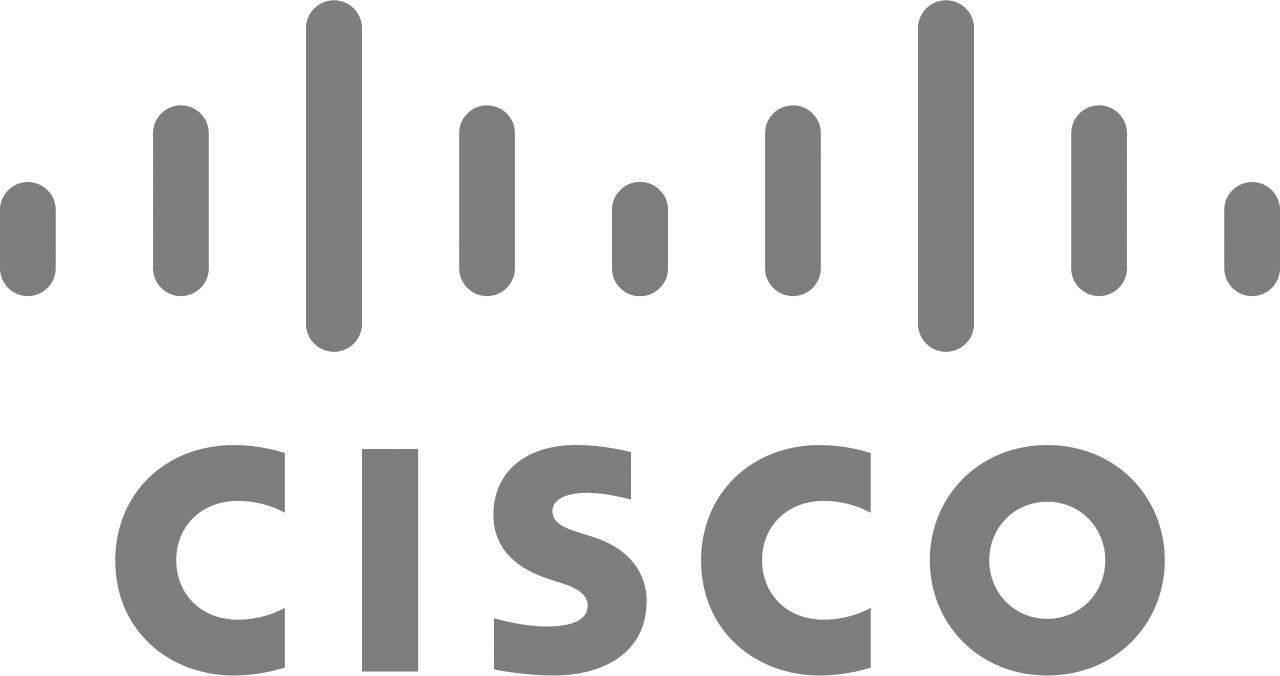





Our most recent ESG reporting materiality assessment was conducted in early 2023 and considered both stakeholder feedback and external developments. The goal of the assessment was to understand and prioritize ESG reporting topics that are most significant to our stakeholders and overlap with topics that are significant to our business.
Information gathered from stakeholder engagements was combined with insights from industry benchmarking, governmental regulations, voluntary initiatives and analysis of online news and social media trends utilizing Datamaran®, which identifies and monitors material ESG risks and opportunities.
We have performed an ESG issue prioritization process to identify and prioritize issues using the Datamaran® platform, a software platform that enables a data-driven and dynamic process for ESG risk identification and monitoring. Our ESG prioritization assessment evaluated potential climate-related risks and noted that these risks are integrated into our business planning, including investment in reducing energy, water use, and GHG emissions. Our most recent ESG prioritization assessment (see Our ESG priorities of this ESG report) found these potential risks to be Tier 2 and 3 priorities at the time the assessment was conducted. Moreover, and as stated in our most recent 10-K, Organon does not believe these potential risks are material to its business at this time.
To gain insight into ESG issues and reporting trends, we engage with numerous third-party groups, including: the World Business Council for Sustainable Development, Business for Social Responsibility and Ipieca. We also work with Datamaran, an ESG risk identifcation and monitoring software company that uses artifcial intelligence to identify, prioritize and monitor ESG issues. Their tool aggregates trends in ESG issues across a wide array of inputs, including: company fnancial flings and sustainability reports; global regulations; policy and framework proposals; Sustainability Accounting Standards Board (SASB) standards; and online news.
We conduct regular corporate responsibility materiality assessments to help us identify the ESG issues most important to our stakeholders and determine where we may achieve the most significant progress to Make Possible a Better Future. Insights for the assessment are gathered from key stakeholders, including customers, investors, employees, suppliers, policymakers, regulators, media, industry groups and peers.
In 2021, Applied updated its materiality assessment using the Datamaran platform. We repeated this assessment in 2022 to revalidate our focus on the most relevant ESG issues. The 2022 materiality assessment revealed no significant changes in ESG issues or prioritization mapping compared with 2021. However, we did see minor shifts in issue prioritization year-over-year when viewing through a double-materiality lens.
MATERIALITY ASSESSMENT:
To help develop the sustainability elements of our next Integrated Business Strategy, the Company partnered with a global consulting firm and utilized Datamaran, a dynamic ESG risk identification and monitoring platform, to complete a formal ESG Materiality Assessment. This helped identify key ESG topics that are most relevant and value-adding to our business and stakeholders. The study was conducted during 2020–2021 and the output remains valid today.
This process involved both benchmarking and obtaining critical input through interviews and questionnaires from customers, trade associations, leading ESG-rated companies, the Board of Directors, members of the Huber family, and our own leaders and employees.
In particular, for the analysis of the external context, Chiesi partners with Datamaran, a data-driven platform that enables companies to identify and monitor material ESG risks and opportunities, thanks to the use of several variables (Datamaran tools consider inputs from a number of Sustainability Reports, media, regulatory environment, financial documents and filings, etc.).
The analysis, in addition to the risk assessments by ERM, also considered the information gathered from the use of the Datamaran tool and the results of the analysis of the organisational context as “external views”.
The analysis of the organisational context, the use of the Datamaran tool and the risk assessment by ERM not only permitted the assessment of the significance of impacts, but also their distribution along the value chain.
MATERIALITY:
In 2021, we began leveraging artificial intelligence (AI)-powered risk analysis software, Datamaran, to complement our ESG management processes, thereby harnessing innovation to power a continuous data-driven review of ESG-related risks and our regulatory, competitive, and operating contexts.
In 2022, we refreshed our materiality assessment to ensure we continue to remain focused on the ESG topics that are most relevant to our business and the priorities of our stakeholders. Material ESG topics are those that could most affect Booz Allen’s performance and ability to create long-term stakeholder value, and are relevant to Booz Allen’s most significant impacts on society, the environment, or the economy. We used Datamaran to assess and prioritize the 27 ESG topics most commonly identified as material by companies in our sector. For a list of all ESG topics assessed and their definitions, refer to the resource guide on our website. The assessment took into consideration internal and external stakeholder priorities based on an employee survey, our past ESG disclosures, peer and sector disclosure benchmarking, regulatory and legal requirements, and media coverage.
Our materiality matrix shows a narrowed down set of assessed topics found to be at the intersection of our stakeholders’ highest priorities and where we consider ourselves to have the greatest impact. Materiality increases as one moves towards the upper right quadrant. Our 2022 materiality assessment revealed no notable changes to our material topics since our 2021 assessment, though some became slightly more or less important to our stakeholders. To help stakeholders navigate our report, the material ESG topics addressed in a report section are identified in its introduction.
Moving forward, in addition to using Datamaran and other business intelligence platforms to continuously monitor stakeholder priorities and ESG-related business risks, we plan to conduct robust materiality assessments on regular cycles to inform our ESG strategy and reporting.
Our engagement strategy includes ongoing communication with our clients, investors, employees and suppliers, as well as industry groups and associations, universities, and people in the communities we serve.
Triton Partners
EU CSRD:
Using third-party provider, Datamaran, we mapped all mandatory regulation in Triton’s geographies related to sustainable finance across the four sectors which Triton focusses its
investments in; Business Services, Industrial Tech, Healthcare and Consumer.
Portfolio ESG performance introduction
Triton has been conducting materiality assessments since 2019 to identify material topics from both an external and internal viewpoint. This shapes the foundation of our strategies and decision-making. As part of the Stewardship Programme, we also support PCs to conduct their own materiality assessments, including “double materiality”, which is a regulatory requirement of the CSRD. Double materiality looks at materiality from the inside-out and the outside-in, from both the impact and financial perspective.
Some PCs have conducted their own materiality assessments but we have supported more than a quarter of PCs in conducting materiality assessments using the platform tool Datamaran. We expect more PCs to undertake this in 2023 due to the regulatory driver and we will continue to support our PCs going forward.
Materiality assessment
Our materiality process is supported by a third-party analysis company – Datamaran - whose software enables a data-driven process for ESG risk identification and monitoring. In 2022, we identified and prioritised our ESG impacts, risks and opportunities according to their importance to internal and external stakeholders in the matrix to the right.The tool analyses information available from public sources, including company reports, regulations, voluntary initiatives, news and social media, to provide an external, data-based perspective on regulatory, strategic and reputational risks and opportunities. This approach ensures that we can continue to build an ESG focus that responds to external events, evolving business priorities, stakeholder expectations, and our own performance results.
In early 2022, we updated our external stakeholder prioritization using Datamaran — a business intelligence tool that harvests information from millions of data points from various public information sources, including annual financial reports, sustainability reports, SEC filings, regulatory initiatives, accredited media, and social media. This approach helps us monitor temporal changes in perceived external stakeholder topic importance and adjust our ESG strategy and reporting if necessary.
Vontier has conducted two full materiality assessments, with our most recent completed in May 2023. Aided by the Datamaran tool and guided by leading global standards, we use a data-driven approach to track topics that are material to our businesses and stakeholders, as detailed in the Materiality assessment. Our eight prioritized material issues were cross-referenced with GRI to create this GRI Content Index.
Since 2012, AEP has been conducting ESG materiality assessments to identify issues that matter most to us and our stakeholders. We conduct a high-level review of our priority issues on an annual basis and a deeper assessment every few years. We also continuously monitor the shift in priorities through dynamic materiality analysis to track externalities that may influence each issue, such as voluntary and mandatory regulatory developments, disclosure efforts of peers and other companies across the globe, and general public opinion.
In 2023, we are conducting our first ESG double materiality assessment to identify new or emerging issues that may impact our company as well as the potential impact our business and operations may have on the environment and society. This assessment is being conducted through Datamaran’s Materiality Assessment tool, which leverages data-driven insights along with direct stakeholder feedback. Results from this assessment help inform AEP’s business strategy and operations; influence our disclosure efforts; and help us identify stakeholder priorities to enhance engagement while shaping broader understanding of the impacts of AEP’s operations.
The Datamaran platform provides AEP with valuable data-driven ESG insights that help reduce risk exposure, target and improve transparency, and identify emerging issues to inform our business priorities. In 2022, AEP invested in Datamaran to support the company’s continued growth and development.
To conduct the assessment, we partnered with Datamaran, an ESG materiality and risk-management firm, which uses a data-driven process for evaluating the relevance of topics and trends to our business and our stakeholders. We began with a list of material issues for our industry, which is aligned with the European Sustainability Reporting Standards (ESRS) and applies SASB's accounting metrics.
We used Datamaran's GRI-certified software platform to scan competitor, supplier and customer ESG reports and financial communications, as well as news sources and mandatory and voluntary regulations from around the world. This assessment was coupled with surveys to leaders at the Company as well as investors with whom we engage regularly on sustainability issues.
GRI's management approach disclosures are included in this report for our material ESG topics as well as disclosures for many of the topics above that are relevant for our industry. We have previously conducted these ESG materiality assessments in 2015, 2018 and 2021.
- New ESG reporting topics were identified through research, stakeholder engagement and topics identified in previous assessments.
- External and internal stakeholders were engaged through interviews, surveys and other approaches to understand their perspectives on identified topics.
- Information gathered from stakeholder engagements was combined with insights from industry benchmarking, governmental regulations, voluntary initiatives and analysis of online news and social media trends utilizing Datamaran®, which identifies and monitors material ESG risks and opportunities.
- The insights and analysis described in step three above resulted in a list of significant ESG reporting topics for MPC and MPLX.
The ESG materiality assessment is the core of our sustainability framework — it helps us to identify and focus on areas where we can most significantly improve performance and enhance our engagement with stakeholders. In 2022, Equitrans renewed its 2019 materiality assessment, including, for the first time, engaging both internal and external stakeholders and leveraging both the Global Reporting Initiative (GRI) and the Sustainability Accounting Standards Board (SASB) standards as inputs. We surveyed nearly 400 employees, including our Board of Directors, and engaged with more than 300 external stakeholders, including investors, financial institutions, customers, landowners, elected officials, suppliers, and ESG raters and rankers. In addition, we evaluated supplemental sources from relevant industry associations, agencies, and ESG frameworks.
As with our initial 2019 assessment, we continued to leverage Datamaran — a leading third-party ESG risk management software platform – to collect and evaluate information from our stakeholders and key supplemental resources. This evaluation ranked the importance of each topic based on different stakeholders’ weightings and ratings to determine the topic’s relative importance to Equitrans and our stakeholders. The analysis created a prioritized list of material ESG topics, which we then validated with Equitrans’ leadership, including our Board of Directors. The assessment results confirmed that Equitrans continues to focus on the most appropriate ESG topics.
(1-2) Understand the organisation context and identity actual and potential impacts
Throughout the years, Chiesi has carried out a series of analyses and research into sustainability topics to guarantee that its operations are conducted to minimise, as far as possible, the risks of producing negative impacts on the environment and society while at the same time fostering the scope and the magnitude of our positive impacts on people and the economy at large.
Based on these analyses and assessments, the Company conducted a review of the organisational context. Multiple inputs were considered in this step, both internally (e.g., policies, procedures, insights from committees during the year and risk analysis carried out by Enterprise Risk Management team) and externally (e.g. analysis on macro sustainability trends at national and international level, analysis on sustainability trends specific for the pharmaceutical sector and benchmark analysis on key peers and competitors).
In particular, for the analysis of the external context, Chiesi partners with Datamaran, a data-driven platform that enables companies to identify and monitor material ESG risks and opportunities, thanks to the use of several variables (Datamaran tools consider inputs from a number of Sustainability Reports, media, regulatory environment, financial documents and filings, etc.).
This analysis resulted in the identification of a list of potential material topics and related impacts.
(3-4) Assess the significance of the impacts and prioritise the most significant impacts for reporting
Following the mapping of impacts, the assessment activity was carried out. The significance, in terms of impact materiality, was assessed by considering the qualitative quantitative methodology used by Enterprise Risk Management (ERM) team for risk assessment, which in turn considers both an inside-out and an outside-in perspective, including evaluation of impact and likelihood.
The analysis, in addition to the risk assessments by ERM, also considered the information gathered from the use of the Datamaran tool and the results of the analysis of the organisational context as “external views”.
To achieve a prioritisation of material topics that also considers the relevance that topics have for the organisation and its stakeholders, Chiesi carried out an engagement activity (through a survey) involving members of the Impact Committee and stakeholders. They are asked – for each potentially material topic – to evaluate on a numerical scale how relevant the topic is for the organisation.
In assessing relevance, the actual and potential impact (in terms of financial impact as well) associated for each potentially material topic was also evaluated.
The analysis of the organisational context, the use of the Datamaran tool and the risk assessment by ERM not only permitted the assessment of the significance of impacts, but also their distribution along the value chain.
This phase focused on internal stakeholders, including our board of directors, corporate officers and our ESG steering team.
To accurately record and analyze the results of the data, we used Datamaran, a software analytics platform, to identify and monitor external risks; using their benchmarking tools enabled us to understand our alignment internally and externally across a wide range of trends and issues.
We will initiate the second phase of the process in late 2023; this will be guided by the results of the first phase and engage a wider range of internal and external stakeholders globally. We believe this two-phased approach will be beneficial to all as it will allow us to understand our stakeholder positions and allow the tracking of the evolution of key issues over time.
In 2021, we began licensing Datamaran’s technology to assist our materiality and ESG risk management efforts. Using this technology, we can quickly identify the relevance of key ESG issues for a broad set of stakeholders. Datamaran uses natural language processing to contextualize information found in companies’ financial and sustainability reports, and looks at current regulations, voluntary initiatives and news to prioritize issues.
For our latest assessment completed in 2022 we relied entirely on Datamaran’s technology to create our external view. For our internal view, we surveyed our Executive Officers and members of our Sustainability Committee of our Board of Directors.
Our Impact Assessment Process
We recognize that not only do the identified topics impact Comerica but that we can in turn impact others. This “double materiality” concept has been included in how we think about all of our Impact Topics. As double materiality becomes more ingrained in corporate responsibility reporting, we expect to increase our efforts in more formally discussing our “outside-in” and “inside-out” impacts in the future.
We continue to use Datamaran’s materiality software platform to augment traditional stakeholder feedback and inform our Impact Topics, which guides our corporate responsibility reporting. This software platform ensures that we are considering a broad set of potential corporate responsibility-related information relevant to our business. Through the use of artificial intelligence (AI) and natural language processing, combined with advanced data analytics, the software allows for more dynamic monitoring of the evolving corporate responsibility landscape. This gives Comerica the perspectives of a far larger group of stakeholders and grounds our work in a more robust, evidence-based approach to corporate responsibility topics.
In 2022, Hexion completed an updated materiality assessment using an evidence-based process that was designed to verify and prioritize the ESG opportunities that matter most to the Company and its stakeholders.
The materiality assessment process is key to ensuring alignment between Hexion’s values and the expectations of associates, suppliers, customers, investors, and communities.
The company identifies and prioritizes material issues using a combination of direct stakeholder interviews and utilization of the Datamaran software solution. With Datamaran’s technology, Hexion benefits from a continuous, evidence-based review of ESG-related risks within its regulatory, competitive, and operating contexts. This approach ensures that the company continues to build an ESG focus that responds to external events, evolving business priorities, and stakeholder expectations.
Our Process and Material
Topics
Our Sustainability Framework is designed to help us identify and prioritize the issues deemed as most critical to our business and our stakeholders. Materiality is at the heart of this framework — it helps us focus on the areas where we can most significantly improve performance and also enhance engagement with our stakeholders.
In 2022, Equitrans renewed our 2019 materiality assessment to ensure we are continuing to prioritize the most significant ESG topics within our business and industry. In doing so, we significantly expanded our sustainability engagement throughout our social value chain. We surveyed nearly 400 employees, as well as our Board of Directors, and engaged more than 300 external stakeholders, including investors, financial institutions, customers, landowners, elected officials, suppliers, and ESG raters & rankers. In addition to conducting extensive stakeholder surveys, we also evaluated supplemental sources from relevant industry associations, agencies, and ESG frameworks, and leveraged both the GRI and SASB standards as inputs to the assessment.
As with our initial 2019 assessment, in 2022 we once again used Datamaran, a third-party ESG risk management software platform, to collect and evaluate information from our stakeholders and key supplemental resources. This evaluation included ranking the importance of each topic, based on stakeholder weightings, to determine the topic’s overall relative importance to Equitrans and our stakeholders. The analysis created a prioritized list of material ESG topics, which we then validated with Equitrans’ leadership, including our Board of Directors. The assessment results confirmed that Equitrans is continuing to focus on the most appropriate ESG issues.
The Company updated its materiality assessment in 2022 and used stakeholders´ inputs to support the ranking, of which ESG issues are most material (and subsequently shall be addressed in the sustainability strategy). The range of ESG topics assessed was defined based on relevant industry and regulatory references, as well as on internal expertise. This materiality matrix is to be fully updated periodically – indicatively every three years – and possibly adjusted in the meantime based on feedback captured from stakeholders in day-to-day business and further methodological improvements. The results of this 2022 update were captured in a materiality matrix (refer to materiality matrix chart below), which is fundamental in confirming the relevance of the Company’s four commitments. It is a three-dimensional matrix:
– importance to stakeholders (vertical axis):
The Company asked its 12 most important stakeholder groups (see “– Stakeholder engagement” section below) about their view on how important it is for the Company to address a given topic. Scoring was established by capturing the voice of critical stakeholders – including employees, customers, suppliers, investors, social partners – via a survey sent to selected representatives in each category and targeting individuals who are familiar with sustainability matters. Other information was obtained with the support of artificial intelligence (based on analysis of reports, legislation and media sources), capturing the importance of the respective topics in stakeholders’ communication. Most information was collected using the Datamaran tool. During the feedback consolidation phase, a greater weight was assigned to critical stakeholders;
About this report
We produced this report with reference to the Global Reporting Initiative (GRI) 2023 Standards. Sustainability data and disclosures are available in our FY22 GRI Content Index in the Appendix. We utilized Datamaran — a software tool that helps organizations identify and prioritize ESG issues.
Our Material Topics
A materiality assessment helps determine the significance of sustainability issues for an organization and its stakeholders, such as investors, employees, customers and the community. Our materiality assessment was conducted using Datamaran, an artificial intelligence-powered digital tool that benchmarks us against peers and compares our performance against industry regulations, sustainability reporting standards and news reports. Datamaran provides real-time analysis of risks to our business, enabling us to continually evolve our planning as our material topics shift.
We take a data-driven approach to analyzing and identifying topics that are material to our business. We adopt a double materiality framework, considering financial, social and environmental impacts to and from our business. The double materiality framework allows Amtrak to assess the interconnectivity between financial, social and sustainability risks.
AMTRAK’s Material Topics as of the end of FY22
This report discusses our approach to the topics that appear in the upper quadrants of the matrix, which Datamaran ranked as having the highest impact to our business and were prioritized by our stakeholders. Our business strategy and operations also addresstopics that fall in the lower quadrants of the matrix, in alignment with our corporate values, even if not discussed in this report.
In connection to “Classical materiality”, set out below, it was built with a bottom-up approach, starting from the analysis of the information collected from subsidiaries in the previous two years12 and from the Datamaran platform, which analyses the main laws and directives in all the countries where FS operates, and the Reports published by other European and international peers and comparable entities.
The methodology used to group the data gathered by the companies considered: the company’s materiality and size, the number of external stakeholders involved and the organisational weight of consulted management.
Materiality Assessment
Every year, Decathlon analyses its sustainable development priorities, which are identified and hierarchised through the materiality matrix exercise. This approach verifies the correct correlation between the issues, non-financial risks, the business model and the company’s policy.
This representation makes it possible to reinforce strategic sustainable development decisions, reveal emerging issues to reassess their importance on a regular basis and allocate necessary resources in the short, medium and long term. Materiality is also an initial component to construct risk mapping, a tool used by the company’s risk Referents.
Decathlon’s methodology is based on several tools dedicated to listening broadly to the company’s stakeholders, ensuring a diversity of data sources that are then used to dynamically and regularly update this data. The interview and collective workshop methodology, which reveals nuanced opinions, was used again this year. It is paired with the Datamaran tool10, whose technology has enabled Decathlon to conduct a digital audience survey of the identified issues since 2021. This method ensures that the subjects are representative and the occurrences are objective. As the company uses it and gets used to using it over time, it will be able to check in with its audiences and their concerns on a regular basis.
New in 2022 - The data collection methodology
The Datamaran tool is used initially to establish a benchmark set of sustainability documents from companies with similar characteristics in the same sector. Then, trends and current regulations are added to this initial analysis to provide an international vision.
A questionnaire is constructed using priority items and subcategories that make the most sense for the company. The scope and the countries concerned remain the same to ensure comparability.
To introduce the concept of double materiality, both in discussions with stakeholders and in the materialisation of issues, Decathlon has chosen to include economic and impact concepts in the listening process by questioning the company’s financial and operational teams. The results reveal that it is still difficult for these people to clearly identify the consequences of the various non-financial issues. Despite that, all those questioned were able to prioritise the importance of the items in this double movement: the impact of sustainable development issues on the company and the company’s impact on social and environmental scopes, thus preparing for new obligations under the future Corporate Sustainability Reporting Directive (CSRD).
Financial concepts are gradually being added to the analysis and this year, the methodology also included data from the Datamaran tool taken from the companies’ integrated reports, voluntary initiatives by financial markets, regulations with financial sanctions as well as reporting obligations meeting SASB standards11. For the interviews, the questionnaires were reworked to include some of the teammates from the financial teams.
CEO's Letter
The potential impacts and risks associated with ESG issues are increasingly top of mind, but at Fortive, ESG issues have always been business issues. We have long recognized the benefits of strong governance, impactful environmental goals and programs, and meaningful people-focused goals and initiatives for our stakeholders.
In 2022, we invested in Datamaran, an AI-based software analytics platform that helps companies identify and monitor ESG risks and opportunities in real-time. We believe in the work Datamaran is doing to make ESG risk and opportunity analysis accessible to organizations seeking to create and sustain long-term value.
Materiality Analysis
In 2021, we conducted a materiality analysis to determine our ESG priorities.
This process took into account both internal and external perspectives and focused on identifying the ESG topics that could have the greatest impact on our business and that matter most to our stakeholders. By prioritizing these issues, we believe we are able to focus our efforts, communicate more effectively with both internal and external audiences, and allocate our resources towards ESG initiatives that support the creation of long-term value and positive impact for our shareholders and society. any new topics with potentially significant environmental and social impacts compared to the 21 topics already identified in 2021.
Obtained external stakeholder feedback from analyst reports, investor queries, data from Datamaran (an AI-driven tool) and other resources to determine prioritization of topics.
Materiality
Materiality assessments help us identify ESG topics of greatest importance to our stakeholders and our business. We conducted our first materiality assessment in 2013 and performed another in 2020, which guided the development of our current ESG strategy. Priority topics that were identified in 2020 are outlined in the 2020 matrix on page 19 of our ESG Disclosures.
We initiated a new materiality assessment in 2022 to ensure our focus areas remain relevant and reflect stakeholder priorities and emerging issues. We partnered with Datamaran, which leverages an artificial intelligence (AI) powered software to automate processes for identifying and monitoring non-financial risks. Based on Datamaran’s dataset and in coordination with our subject matter experts, Teva identified a list of ESG topics with the potential of being material to our business and stakeholders. We prioritized these topics according to an AI assessment for regulation, voluntary initiatives, media and peer reports, and blended these with survey results from a representative sample of direct stakeholders, including investors, employees, suppliers, customers, nongovernmental organizations and representatives of governments and associations. Internally, we interviewed all members of Teva’s Executive Management and a selection of our Board of Directors and ran a focus group with our internal ESG Forum. This analysis was synthesized to map topics according to their relative importance to stakeholders and to Teva, as outlined in the corresponding matrix, applying differing weighted factors for each stakeholder group.
In this report, we started identifying newly relevant topics raised through this process, such as innovation and human rights. Further, the results will inform updates to our ESG strategy and new disclosures in our 2023 ESG Progress Report and beyond.
area for the Group. The outcome, described below, essentially confirmed the findings of the analysis conducted in the previous year.
• Analysis of topics material to the ITS sector, namely those that may generate an impact
on society and the environment, to identify any emerging issues. This phase involved:
• benchmarking, via the selection of a sample of companies operating in the sector, or in adjacent sectors to Yunex Traffic, representative of technologies related to intelligent transport systems;
• desk analysis, carried out via the Datamaran intelligent data analysis platform, which compared the material topics for over 160 companies, based in Europe, North and South America, East Asia and Oceania, and operating in the electronics, IT hardware and software and communications technology sector; 4,516 active regulations and 121,500 press releases were analysed.
The activities described above did not reveal any new topics with potentially significant environmental and social impacts compared to the 21 topics already identified in 2021.
The Materiality Assessment Process
Solenis utilized the Datamaran platform throughout a three-phase process to provide a materiality assessment from which it could better understand and respond to stakeholder interest and concerns:
1. Internal stakeholder engagement:
As part of our materiality assessment process, we began by seeking to understand Soleni's own priorities as seen through the eyes of its leaders and employees. This was done through an artificial intelligence-based analysis of its most recent sustainability report via the Datamaran platform. The 20 most prominent issues were identified as being relevant to the materiality assessment.
2. External stakeholder analysis:
The external stakeholder perspectives were determined by a tailored and comprehensive analysis, again relying on Datamaran data set. Eight different stakeholder groups were identified: Customers, Suppliers, Peers, Policymakers, Regulators, Media, Investors and Lenders. Solenis handpicked a slate of 118 global peer companies, whose most important sustainability priorities were identified through analyses of publicly available reports and documents. Perspectives from a global set of policymakers and regulators were incorporated. For the media input, Datamaran leveraged Aylien, an online news curator; irrelevant news topics were filtered out.
3. Ranking and prioritizing:
The stakeholders were then weighted on a high, medium or low priority, with customers being the most important and the media being the least. The data from both sides was then combined based on weighting and prioritization to arrive at a singular set of material issues, topics and factors.
Zain conducted a topic mapping exercise, which takes into consideration previous material topics, GSMA benchmarks and Datamaran’s telecom industry list, to ensure that emerging risks are included in the company’s analysis.
A shortlist of 27 topics were compiled that are based on previous reports and upcoming trends, and which included:
• Datamaran’s machine learning telco industry list
• The macro-business environment
• Benchmarking against other prominent players in the industry and the region
• Inputs gathered from operational review meetings, business plan meetings, and from leadership and executive management
• Sustainability interests raised by stakeholders
• Socio-economic and political factors
Zain bases its annual Sustainability Report on the results of the materiality assessment exercise in order to further understand the consequential issues for the company and its stakeholders.
Eastman is data-driven in our identification and monitoring of material risk .
We have updated our materiality matrix in 2022 based on the importance our diverse set of external and internal stakeholders place on identified sustainability issues. We identify and prioritize these sustainability issues using Datamaran, the only software in the world that enables a data-driven and dynamic process for ESG risk identification and monitoring. With Datamaran’s patented technology, we harness innovation to gain a continuous, evidence-based review of ESG-related risks within our regulatory, competitive and operating contexts. Eastman uses Datamaran to aggregate and analyze public communications and disclosures from our top stakeholders, including customers, industries and peers, investors, media, policy makers, regulators and suppliers. Datamaran also sends surveys to a targeted list of Eastman employees and the leaders of our Community Advisory Panels (CAPs).
We use the sustainability materiality assessment to identify areas of focus and refine our commitments. All 33 factors in this listening tool are important. This matrix reflects relative importance. Prioritization and effective management of these issues and opportunities are integrated into our strategy, business models, risk management and governance to drive continued progress. The results are considered in determination of the information included in our public disclosures, including this sustainability report, and ultimately drive the development of our A Better Circle framework.
Naturgy
Process of determining material topics
To identify potential and actual impacts, negative and positive, on the economy, the environment and people, including impacts on human rights in all activities, Naturgy uses the Datamaran® tool.
Datamaran® has a preliminary identification of aspects (topic mapping) which ensures that the determination of material topics is based on a complete description of the potential impacts a company has on people and the environment.
Besides, this tool provides the following advantages:
– Data-driven materiality analysis: Datamaran® is software that enables a comprehensive, data-driven process for monitoring external risks, including Environmental, Social and Governance (ESG) risks. The software technology provides real-time analysis of strategic, regulatory and reputational risks and opportunities. Its use strengthens understanding of ESG, geopolitical, technological and emerging issues, ensures alignment with the different expectations of internal and external stakeholders, and enhances the company’s ability to monitor its evolution.
Sources and outcomes of the financial materiality assessment
To develop financial materiality, we applied information sourced by the Datamaran tool. This leverages annual financial reports from industry peers, mandatory regulations, voluntary initiatives from financial markets and SASB standards regarding capital.
Materiality Analysis
The materiality analysis remains a fundamental tool for listening to our stakeholders, supporting our business strategy and helping the value creation over the long term.
It takes a dynamic and forward-looking view of ESG topics, allowing us to take regular action on emerging risks and relevant issues. What may be immaterial to a company or industry today could become material tomorrow.
Every year, we carry out our materiality analysis by taking into consideration a variety of sources to ensure that we are encompassing all the material topics in the banking industry for our stakeholders.
We apply information sourced both externally, by the Datamaran tool, and internally, by listening to our stakeholders.
External sources allow us to investigate the main laws and directives, to analyse the latest news on our sector on online media and social networks and to benchmark against our peers.
ESG materiality
Every year, we conduct a materiality assessment that enables us to understand which environmental, social and governance issues are most likely to impact the success of LEO Pharma. In 2022, we updated our approach to materiality by determining not only the environmental, social and governance issues, but also issues related to Enabling Health – our program defining LEO Pharma’s social value contribution. As in previous years, we used a data driven approach powered by Datamaran to prepare the materiality matrix. Datamaran’s automated approach reviews millions of data points from corporate reports, mandatory and voluntary regulations, news items and social media, giving us an overview of issues material to our external stakeholders. To complete our materiality assessment, we combined these insights with input from our key internal stakeholders, who via surveys identified the most material issues. Analyzing materiality plays a coordinating role and serves as a guide for defining on which issues it is most relevant to report in our annual report and sustainability report. It is also a guiding process in prioritizing and enhancing our approach to managing potential sustainability risks and processes.
In 2022, we updated our ESG materiality assessment using Datamaran’s cloud-based AI software platform. Datamaran’s patented technology provides our ESG Steering Committee with real-time data analysis to identify and monitor new or emerging issues that may impact Kraft Heinz, including regular insight into our Company’s unique strategic, regulatory, and reputational risks and opportunities. The assessment includes signals from across a variety of different sources, including corporate annual filings, mandatory regulations, voluntary policy initiatives, online news and media, as well as a cross-functional employee survey. Through this tech-enabled, dynamic and data-driven approach, we have strengthened our strategy and governance process to meet the rise of stakeholder demands at Kraft Heinz.
We used Datamaran’s artificial intelligence and big data platform for our 2021 assessment of priority sustainability topics.
- Identify sustainability topics: We selected and customized sustainability topics relevant to BMO using Datamaran’s library of hundreds of sustainability issues.
- Determine importance to stakeholders: We determined the importance of each topic to our stakeholders with the assistance of the Datamaran platform which has:
- benchmarked the latest reporting of more than 745 financial sector companies in the countries where we operate
- reviewed more than 1,900 mandatory sustainability related regulations and more than 1,365 voluntary sustainability-related initiatives relevant to the financial services sector in the countries where we operate
- reviewed financial services sector media and social media activity, including more than 21,145 articles and nearly 237 million social media posts
As part of its corporate ESG strategy and planning initiatives, Hexion completed an updated materiality assessment in 2020. During this assessment, we engaged with various internal and external stakeholders with support from ERM and the Datamaran software solution. Datamaran is the market leader in ESG risk management and allows us to continuously monitor trends in material topics in order to shift ESG focus as needed.
The assessment included surveys with close to 300 internal and external stakeholders, followed up by approximately 45 interviews, as well as discussion sessions with employee groups. External stakeholder groups included in the assessment were non-governmental organizations, stockholders, academics, government agencies, community representatives and organizations, suppliers, media and industry groups. In addition, we surveyed some 6,000 customers in the U.S., UK, Chile, Mexico, Norway and Thailand. Those surveyed were asked to consider a time horizon of up to 10 years. International sustainability non-profit 'Forum for the Future' advised us on the assessment and we also used Datamaran’s software analytics tool and online horizon scanning portal to review and analyze topics for our industry and stakeholders.
Our materiality assessment is based on an ongoing trend analysis, media search, and stakeholder input. In 2021, we solicited input from a diverse group of external and internal stakeholders, including investors, NGOs, customers, suppliers, peer companies, academia, and senior management in Philips. Similar to 2020, we used an evidence-based approach to materiality analysis powered by Datamaran. By applying Datamaran’s automated sifting and analysis of millions of data points from publicly available sources, including corporate reports, mandatory regulations and voluntary initiatives, as well as news and social media, we identified a list of topics that are material to our business. With this data-driven approach to materiality analysis we have incorporated a wider range of data and stakeholders than was ever possible before and managed to get an evidence-based perspective on regulatory, strategic and reputational risks and opportunities.
To identify material issues, Naturgy has relied on the use of the Datamaran® tool. This tool provides the following advantages:
Data-driven materiality analysis: Datamaran® is software that enables a comprehensive, data-driven process for monitoring external risks, including Environmental, Social and Governance (ESG) risks. The software technology provides real-time analysis of strategic, regulatory and reputational risks and opportunities. Its use strengthens understanding of ESG, geopolitical, technological and emerging issues, ensures alignment with the different expectations of internal and external stakeholders, and enhances the company’s ability to monitor its evolution.
Dynamic materiality based on diverse sources: the analysis takes into account information published by different companies from all sectors in their annual corporate reports, introduces into the analysis both mandatory regulations and other voluntary policy initiatives, as well as information published in traditional media and social media such as Twitter. The analysis has focused on those issues that experienced an increase in relevance, and also identifies which stakeholders (peers, industry, regulators, general public) were behind the increase. This analysis is carried out regularly throughout the year and makes it possible to monitor those issues that are in the process of materialising, based on a dynamic materiality perspective.
General issues map adapted to Naturgy’s reality: the 21 issues assessed in the materiality analysis have been built from an exhaustive map of 90 issues (topic mapping) included in the tool itself, so that all emerging issues of interest are taken into account in the analysis.



